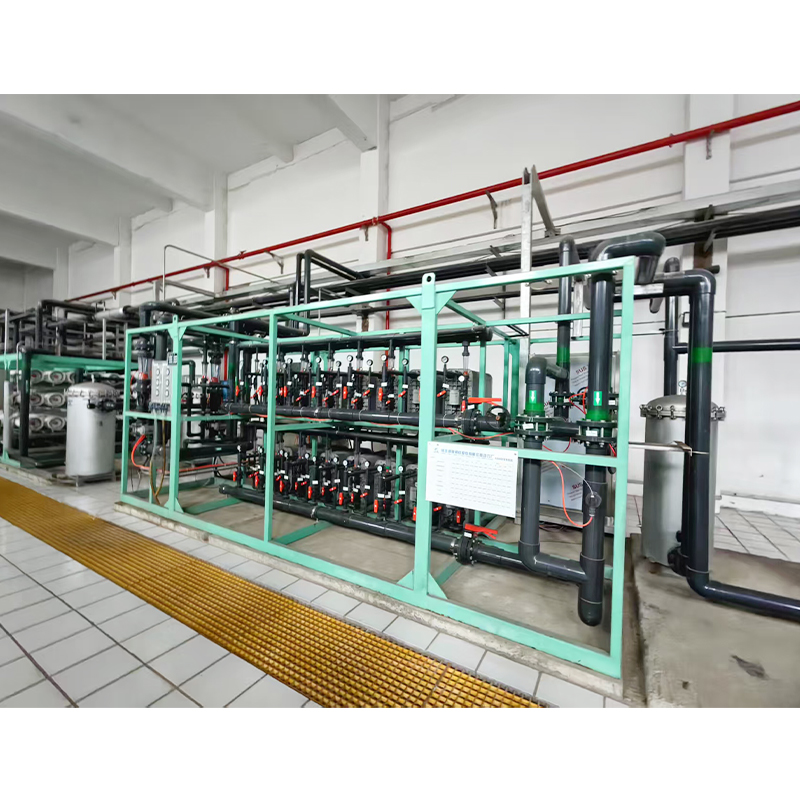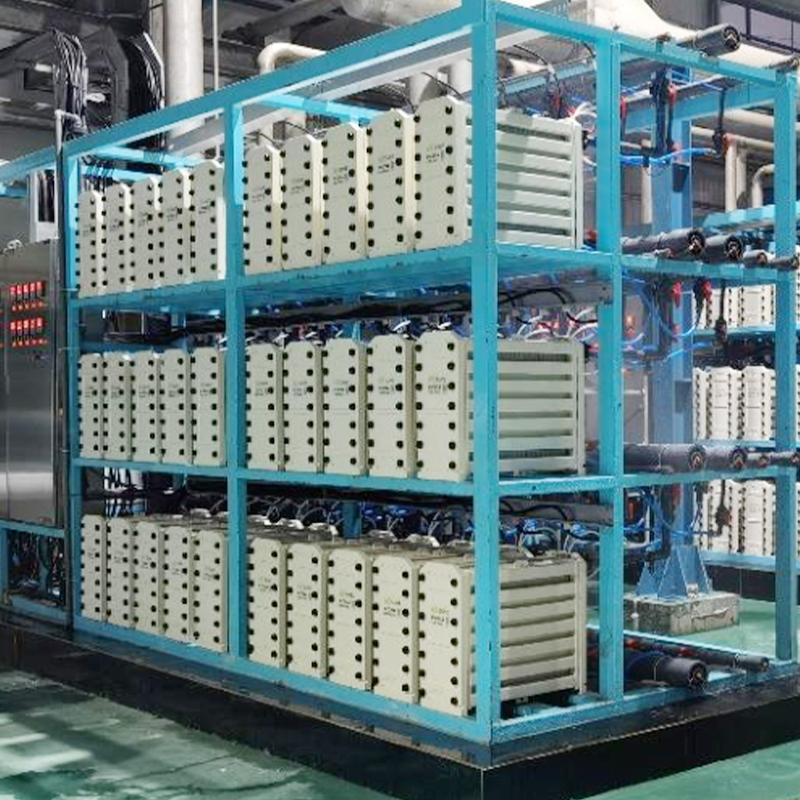EDI Equipment
SCKJ-EDI-
The processing capacity is 5 tons/hour to 1000 cubic meters/hour, which can be customized according to user needs. The production cycle is to be determined after negotiation.
Electrodeionization (EDI) is a new technology for preparing ultrapure water (high-purity water) that organically combines electrodialysis membrane separation technology with ion exchange technology. It uses the polarization phenomenon in the electrodialysis process to electrochemically regenerate the ion exchange resin filled in the fresh water chamber. The EDI membrane stack is mainly composed of alternating cation exchange membranes, concentrated water chambers, anion exchange membranes, fresh water chambers, and positive and negative electrodes. Under the action of the DC electric field, the cations and anions in the ion exchange resin in the fresh water chamber migrate toward the negative electrode and the positive electrode respectively along the channels formed by the resin and the membrane. The cations pass through the cation exchange membrane, and the anions pass through the anion exchange membrane, and enter the concentrated water chamber to form concentrated water. At the same time, the cations and anions in the EDI influent water exchange with the hydrogen ions and hydroxide ions in the ion exchange resin to form ultrapure water (high-purity water). The ultra-limiting current causes the large amount of hydrogen ions and hydroxide ions produced by water electrolysis to continuously regenerate the ion exchange resin. In traditional ion exchange, chemical intermittent regeneration is required after the ion exchange resin is saturated. The resin in the EDI membrane stack is continuously regenerated by the electrolysis of water, and the operation is continuous, without the need for acid-base chemical regeneration.



